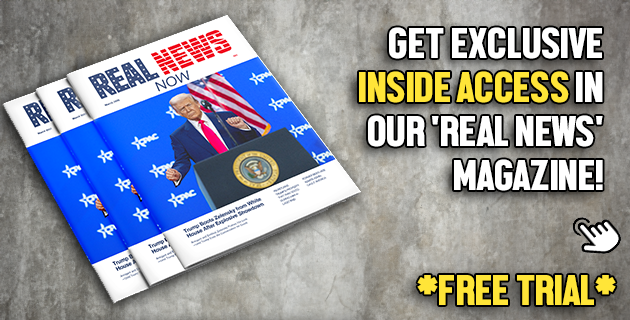President Trump continues to deliberate over the United States’ direct involvement in the war, balancing the potential gains of military intervention against the price of drawing a war-fatigued American populace into an entirely Israeli-sparked conflict. Taking to social media, Trump suggested Iran’s supreme leader would promptly fall if targeted, to which Iran retorted with vows of never capitulating. Up until this juncture, the US has expertly maneuvered through a stance of calculated compliance, furnishing Israel with necessary defensive backup via intelligence exchange and missile defense collaboration, but shying away from active participation in strikes against Iran.
However, with the unfolding conflict, a discernible tilt in American foreign policy seems apparent, with its stance becoming more likely to amplify the war. American military backup is on its way to the area of conflict while Trump made an unexpected early exit from the G7 summit in Canada, citing the need to attend to ‘the Middle East situation’ from Washington. In addition, his refusal to back a temporary ceasefire coupled with his persistence on realizing a definite conclusion to Iran’s nuclear programs threatens the US with entanglement in another Middle Eastern war, which he had initially pledged to avoid.
Over the past year, both Israel and Iran have exchanged isolated instances of strikes, always drawing back at the brink of full-scale war. However, last week, Israeli Prime Minister Benjamin Netanyahu’s attempt to target Iran’s nuclear establishments has escalated the tension and transformed it into a war of a fundamentally different posture.
Both nations are entrenched in total warfare, with egregious civilian casualties. Neither party shows any sign of a willingness to step down and mitigate the confrontation. The challenging task of breaking this cycle falls upon the shoulders of external entities, the United States in particular, to impose constraints on escalation, and instigate diplomatic conversations.
In a surprise initial offensive on June 13, Israel effectively disrupted Iranian military command, destroyed substantial military assets, and crucially crippled a significant portion of Iran’s civilian nuclear program. However, it seems like Israel’s deeper aspiration is to induce a regime shift within Iran, or at the very least, weaken the Iranian state.
Despite the initial success of the Israeli strikes, Iranian military forces retaliated. The conflict has now devolved into an escalating exchange of firepower that frequently impacts populous urban centers in both nations. Owing to Israel’s air dominance and missile defense mechanisms, Iran’s long-range ballistic missiles have had limited success, but they have nonetheless led to unprecedented damage to Israel’s economy and population hubs.
The prevailing belief on both ends seems to be that, by imposing enough suffering and chaos, they can pressure their adversary into submission. They show a readiness to accept levels of damage that, not long ago, would have been unthinkable.
Israel grapples with limitations in what its defense forces can achieve vis-à-vis Iran’s nuclear aspirations. The Fordow Fuel Enrichment Plant, tucked among mountains and impervious to total annihilation by any weapon in the Israeli collection, poses a significant challenge. Destruction of this plant would necessitate the use of a series of large non-nuclear bunker busters like the Massive Ordnance Penetrator from the United States.
However, Iran has relayed stern warnings that any American involvement in the war would prompt attacks on US forces and bases. While keeping Iran non-nuclear aligns with core US interests, it cannot allow itself to be misunderstood as a pawn in a war aimed at regime change in Iran.
Instead, the US should contemplate a coercive mediation strategy: using its additional support for military or intelligence matters to motivate Israeli restraint. This implies the need for opposition against further strikes on Iran’s leadership or civilian infrastructure, and linking continued US military aid to the limiting of Israeli activities to immediate and legitimate risks.
Trump has rejected plans to target Iran’s supreme leader. To address perceived threats, the US could opt to privately negotiate with Iran in search of a middle ground. Achieving a peaceful resolution necessitates compromise, including straying from the all-or-nothing attitude on Iranian uranium refinement.
One feasible solution might be to resurrect conversations about a multinational enrichment consortium. Such a proposal would retain Iran’s peaceful nuclear capabilities while restricting its direct access to weapons-grade fissile material.
If the current conflict carries on unabated without a compromise, Iran may deem the acquisition of a nuclear weapon as its only protection. Experiencing immense pressure, Tehran could adopt a stance of increased secrecy, simultaneously maintaining nuclear ambiguity and accelerating efforts towards acquiring breakout capabilities. This predicament cannot be resolved militarily; the only solution lies in verified, diplomatic controls.
Meanwhile, Israel is feeling the socio-economic effects of the ongoing conflict, as civilians suffer injuries, oil refineries are hit, and buildings get demolished. The US should grasp that seeking a diplomatic route to dissolve the conflict is not tantamount to Israel’s abandonment, but rather ancillary to restoring the peace and tranquility of Israeli citizenry.
Above all, it is incumbent upon the US to vehemently reject the belief that perpetuating this war will achieve a flawless victory. Although the targeted killing of nuclear scientists may temporally impede progress, many of those assassinated were seasoned experts with proteges scattered across multiple institutions.
Regrettably, even a swift end to this war will make the task of sustained diplomacy to keep Iran non-nuclear incredibly challenging. In essence, protracted diplomacy, and not war, is the best approach to securing peace and stability in the region.




